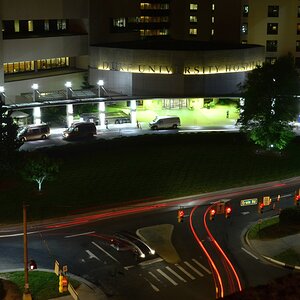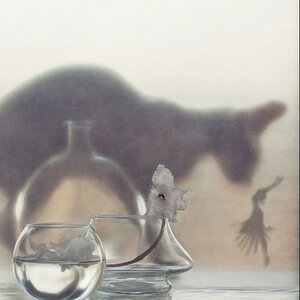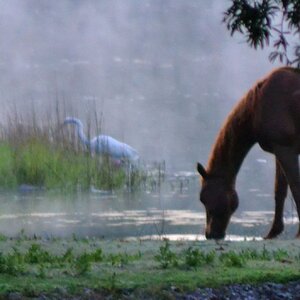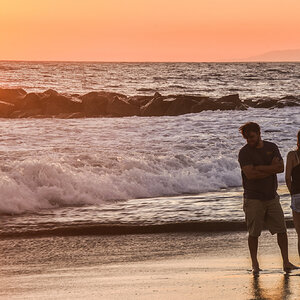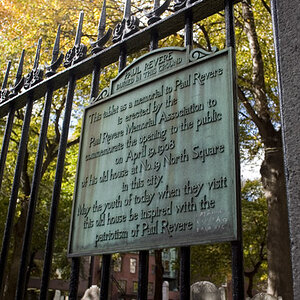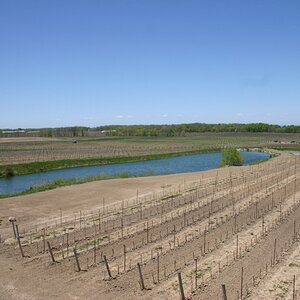Drake
TPF Noob!
- Joined
- Nov 19, 2007
- Messages
- 684
- Reaction score
- 10
- Can others edit my Photos
- Photos NOT OK to edit
I've been thinking the other day, what would be the result of underexposing a photo on ISO 1600 and correcting it in post. I like the IQ of my Rebel XS. It might not be the greatest, but still enough for me. One thing it lacks though is ISO 3200. So I've ran some tests to try simulate ISO 3200 and ISO 6400 by underexposing the shot. Here are the results.
It's a street shot from the flat I am renting, pretty cloudy day. Not really a beautiful photo RAW+JPG, no edits at all, unless noticed. RAW images are processed in LR2, default amount of sharpening - 25/100
ISO 1600
http://dl.dropbox.com/u/17041033/ISO/ISO1600-RAW.jpg
http://dl.dropbox.com/u/17041033/ISO/ISO1600-JPG.jpg
So far so good. I like the noisier, but much sharper RAW more.
ISO 1600, -1EV (+1EV in post), color NR set to 50/100 to get rid of the color noise
http://dl.dropbox.com/u/17041033/ISO/ISO1600-RAW-1EV.jpg
http://dl.dropbox.com/u/17041033/ISO/ISO1600-JPG-1EV.jpg
I'd say it's a tie. The noise starts to get more obvious in RAW. JPG on the other hand is surprisingly smooth for a simulated ISO 3200.
ISO 1600, -2EV (+2EV in post), color NR set to 50/100 to get rid of the color noise
http://dl.dropbox.com/u/17041033/ISO/ISO1600-RAW-2EV.jpg
http://dl.dropbox.com/u/17041033/ISO/ISO1600-JPG-2EV.jpg
Here's where the things start to get weird. As expected, the RAW has some really bad noise, especially in the shadows, in the windows of the office building. Looking at the JPG though, it's actually quite nice. Not great, but very usable, especially for snapshots printed at 6x4" I suppose.
Turns out the old 10MP CMOS from XTi that's not meant to shoot in ISO 3200 and ISO 6400 actually does a pretty good job in easy lighting conditions. Now let's try something more tricky - my girlfriend's desk. Lots of shadows areas etc. Settings as before.
ISO 1600
http://dl.dropbox.com/u/17041033/ISO/2-ISO1600-RAW.jpg
http://dl.dropbox.com/u/17041033/ISO/2-ISO1600-JPG.jpg
I've got mixed feelings about the RAW here. It is sharp, but even at ISO 1600 it has trouble with shadows. Check out the black bags lower left corner. They look horrible, and I just can't recover them in LR. In JPG there's much more detail in the darker parts. There's also some chroma noise, but it's easy to get rid of in post so no big deal about that.
ISO 1600, -1EV (+1EV in post), color NR set to 50/100 to get rid of the color noise
http://dl.dropbox.com/u/17041033/ISO/2-ISO1600-1EV-RAW.jpg
http://dl.dropbox.com/u/17041033/ISO/2-ISO1600-1EV-JPG.jpg
Quite similar here, the shadows look much more pleasing in JPG than RAW.
ISO 1600, -2EV (+2EV in post), color NR set to 50/100 to get rid of the color noise
http://dl.dropbox.com/u/17041033/ISO/2-ISO1600-2EV-RAW.jpg
http://dl.dropbox.com/u/17041033/ISO/2-ISO1600-2EV-JPG.jpg
The photo in RAW is falling apart, it's just plain ugly, no doubt about that. JPG could be quite usable under certain circumstances.
I believe in the second test, the results are not as optimistic, but still, proves that it is actually possible to shoot the Rebel XS in something similar to ISO 3200 and ISO 6400 and still get away with it. I haven't applied any luminance NR, which would probably make the noise in RAW much less obvious. But it would still leave the problem of ugly shadows.
What is your opinion on the sample photos? Do you think they are usable if there is no other way of getting a shot? What NR software would you recommend?
It's a street shot from the flat I am renting, pretty cloudy day. Not really a beautiful photo RAW+JPG, no edits at all, unless noticed. RAW images are processed in LR2, default amount of sharpening - 25/100
ISO 1600
http://dl.dropbox.com/u/17041033/ISO/ISO1600-RAW.jpg
http://dl.dropbox.com/u/17041033/ISO/ISO1600-JPG.jpg
So far so good. I like the noisier, but much sharper RAW more.
ISO 1600, -1EV (+1EV in post), color NR set to 50/100 to get rid of the color noise
http://dl.dropbox.com/u/17041033/ISO/ISO1600-RAW-1EV.jpg
http://dl.dropbox.com/u/17041033/ISO/ISO1600-JPG-1EV.jpg
I'd say it's a tie. The noise starts to get more obvious in RAW. JPG on the other hand is surprisingly smooth for a simulated ISO 3200.
ISO 1600, -2EV (+2EV in post), color NR set to 50/100 to get rid of the color noise
http://dl.dropbox.com/u/17041033/ISO/ISO1600-RAW-2EV.jpg
http://dl.dropbox.com/u/17041033/ISO/ISO1600-JPG-2EV.jpg
Here's where the things start to get weird. As expected, the RAW has some really bad noise, especially in the shadows, in the windows of the office building. Looking at the JPG though, it's actually quite nice. Not great, but very usable, especially for snapshots printed at 6x4" I suppose.
Turns out the old 10MP CMOS from XTi that's not meant to shoot in ISO 3200 and ISO 6400 actually does a pretty good job in easy lighting conditions. Now let's try something more tricky - my girlfriend's desk. Lots of shadows areas etc. Settings as before.
ISO 1600
http://dl.dropbox.com/u/17041033/ISO/2-ISO1600-RAW.jpg
http://dl.dropbox.com/u/17041033/ISO/2-ISO1600-JPG.jpg
I've got mixed feelings about the RAW here. It is sharp, but even at ISO 1600 it has trouble with shadows. Check out the black bags lower left corner. They look horrible, and I just can't recover them in LR. In JPG there's much more detail in the darker parts. There's also some chroma noise, but it's easy to get rid of in post so no big deal about that.
ISO 1600, -1EV (+1EV in post), color NR set to 50/100 to get rid of the color noise
http://dl.dropbox.com/u/17041033/ISO/2-ISO1600-1EV-RAW.jpg
http://dl.dropbox.com/u/17041033/ISO/2-ISO1600-1EV-JPG.jpg
Quite similar here, the shadows look much more pleasing in JPG than RAW.
ISO 1600, -2EV (+2EV in post), color NR set to 50/100 to get rid of the color noise
http://dl.dropbox.com/u/17041033/ISO/2-ISO1600-2EV-RAW.jpg
http://dl.dropbox.com/u/17041033/ISO/2-ISO1600-2EV-JPG.jpg
The photo in RAW is falling apart, it's just plain ugly, no doubt about that. JPG could be quite usable under certain circumstances.
I believe in the second test, the results are not as optimistic, but still, proves that it is actually possible to shoot the Rebel XS in something similar to ISO 3200 and ISO 6400 and still get away with it. I haven't applied any luminance NR, which would probably make the noise in RAW much less obvious. But it would still leave the problem of ugly shadows.
What is your opinion on the sample photos? Do you think they are usable if there is no other way of getting a shot? What NR software would you recommend?


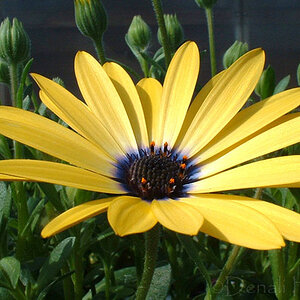
![[No title]](/data/xfmg/thumbnail/32/32702-7344d6e6132276dd7bfc046084fea432.jpg?1619735604)
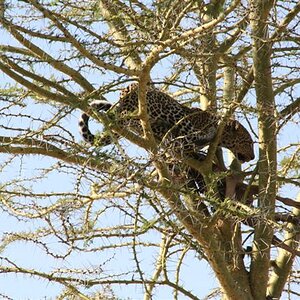
![[No title]](/data/xfmg/thumbnail/42/42480-70a0d1b3ccdeb380098dd12f512b4a17.jpg?1619740195)

